-
 Bitcoin
Bitcoin $106,731.2224
-1.05% -
 Ethereum
Ethereum $2,444.9804
-1.20% -
 Tether USDt
Tether USDt $1.0003
0.01% -
 XRP
XRP $2.1882
0.09% -
 BNB
BNB $651.1435
-0.61% -
 Solana
Solana $148.3252
-2.09% -
 USDC
USDC $1.0000
0.01% -
 TRON
TRON $0.2787
0.55% -
 Dogecoin
Dogecoin $0.1598
-3.16% -
 Cardano
Cardano $0.5520
-2.43% -
 Hyperliquid
Hyperliquid $39.0960
-2.64% -
 Bitcoin Cash
Bitcoin Cash $516.9519
2.98% -
 Sui
Sui $2.7011
-2.95% -
 Chainlink
Chainlink $13.0582
-1.71% -
 UNUS SED LEO
UNUS SED LEO $8.9250
-2.53% -
 Stellar
Stellar $0.2359
-0.18% -
 Avalanche
Avalanche $17.3856
-3.73% -
 Toncoin
Toncoin $2.8095
-3.56% -
 Shiba Inu
Shiba Inu $0.0...01121
-1.95% -
 Litecoin
Litecoin $85.2795
-0.85% -
 Hedera
Hedera $0.1471
-2.15% -
 Monero
Monero $319.8004
1.12% -
 Dai
Dai $1.0001
0.01% -
 Ethena USDe
Ethena USDe $1.0001
0.02% -
 Bitget Token
Bitget Token $4.5344
-1.07% -
 Polkadot
Polkadot $3.3224
-2.96% -
 Uniswap
Uniswap $6.9697
-2.75% -
 Aave
Aave $266.1658
-2.25% -
 Pepe
Pepe $0.0...09414
-3.41% -
 Pi
Pi $0.4913
-3.29%
How to fix "invalid address" error in Trust Wallet?
Double-check addresses, ensure correct network selection, and update Trust Wallet to avoid "invalid address" errors during crypto transactions.
Jul 01, 2025 at 07:07 pm
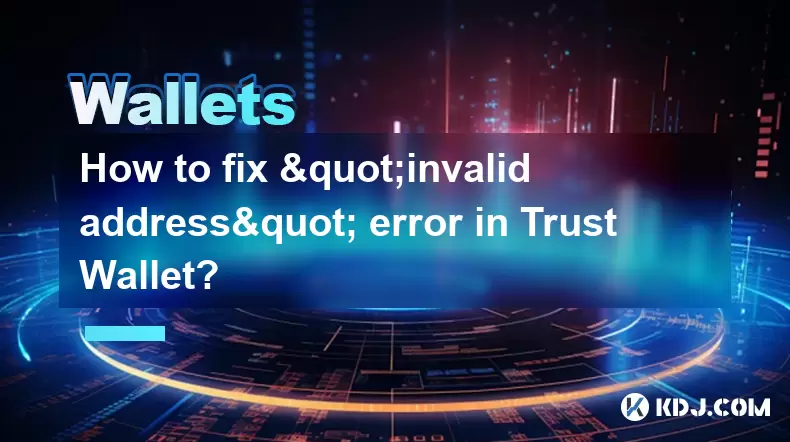
Understanding the "Invalid Address" Error in Trust Wallet
When using Trust Wallet, users might encounter an "invalid address" error during transactions. This typically occurs when attempting to send cryptocurrency or tokens to a recipient address that does not meet specific format requirements. The error serves as a safety mechanism to prevent sending funds to incorrect or non-existent addresses. It is crucial to understand what triggers this message and how it relates to blockchain standards.
Each blockchain network, such as Ethereum, Binance Smart Chain, or Polygon, has its own address structure and validation rules. For example, Ethereum addresses start with "0x" and are 42 characters long, including the prefix. If an input deviates from these specifications—like missing characters, wrong prefixes, or special symbols—the wallet flags it as invalid.
Common Causes of the "Invalid Address" Error
There are several reasons why the "invalid address" error appears in Trust Wallet:
- Incorrectly formatted address: Copy-pasting errors or manually entering a recipient address can introduce typos.
- Wrong network selection: Sending tokens on one network (e.g., Ethereum) to an address meant for another (e.g., Binance Smart Chain) results in validation failure.
- Outdated Trust Wallet version: Older versions may not support certain token standards or updated validation protocols.
- Unsupported token types: Some tokens or contracts aren't fully compatible with Trust Wallet's current integration.
- QR code scanning issues: Poor image quality or corrupted QR data may lead to malformed addresses being scanned.
Identifying the root cause helps streamline the troubleshooting process and prevents unnecessary fund loss.
Step-by-Step Guide to Fixing the Error
To resolve the "invalid address" error, follow these detailed steps:
- Double-check the recipient address: Ensure there are no extra spaces, symbols, or missing characters. Compare it visually if copied from a browser to the wallet app.
- Verify the correct blockchain network: Go to the settings in Trust Wallet and confirm the selected network matches the one intended for the transaction. For instance, if you're sending BEP-20 tokens, make sure the network is set to Binance Smart Chain.
- Update Trust Wallet to the latest version: Navigate to your device’s app store and install any available updates for Trust Wallet. Newer versions often include bug fixes and compatibility improvements.
- Re-scan the QR code: If using a QR code, ensure it is clear and well-lit. Try scanning it again or use a different camera angle.
- Use a blockchain explorer: Paste the address into a relevant explorer like BscScan or Etherscan to verify its validity and check if it belongs to the expected network.
These actions should help eliminate formatting and compatibility issues commonly responsible for the error.
How to Avoid the "Invalid Address" Error
Prevention plays a key role in avoiding repeated instances of the "invalid address" error. Consider implementing the following practices:
- Always copy and paste addresses: Manual entry increases the risk of mistakes. Use the clipboard function provided by most wallets and websites.
- Bookmark trusted explorers and wallet tools: Having quick access to verification platforms reduces the chance of pasting wrong links or visiting phishing sites.
- Enable network confirmation prompts: Some wallets allow alerts when switching networks, ensuring awareness before initiating a transaction.
- Use wallet-to-wallet transfers only after verification: Before sending funds, especially large amounts, test with a small transaction first to confirm everything works correctly.
By adhering to these habits, users significantly reduce the likelihood of encountering invalid address issues.
Advanced Troubleshooting Techniques
If basic methods fail to resolve the "invalid address" error, consider advanced checks:
- Check contract compatibility: Not all tokens are supported by Trust Wallet. Confirm whether the token you’re trying to send is listed in the official Trust Wallet documentation or community forums.
- Inspect transaction data via a block explorer: Look up previous successful transactions involving the same address to compare formats and ensure consistency.
- Clear Trust Wallet cache: On Android devices, go to Settings > Apps > Trust Wallet > Storage > Clear Cache. On iOS, uninstall and reinstall the app while backing up the wallet first.
- Contact Trust Wallet support: If the problem persists, reach out through their official support channels. Provide screenshots and detailed steps taken so far for faster resolution.
These techniques cater to more technical users but can be invaluable in diagnosing complex issues.
Frequently Asked Questions
Q: Can I recover funds sent to an invalid address?
A: Unfortunately, once funds are sent to an invalid or incorrect address, recovery is nearly impossible unless the recipient controls that address and agrees to return the funds.
Q: Why does Trust Wallet accept some addresses but not others?
A: Trust Wallet validates addresses based on checksums and network-specific rules. Unsupported or improperly formatted addresses will trigger the "invalid address" error.
Q: Does changing the network in Trust Wallet affect existing balances?
A: No, changing the network does not impact your stored assets. However, it changes which blockchain you interact with when making transactions.
Q: How do I know if my Trust Wallet is on the correct network?
A: Open the app, tap your wallet address, and look at the top-left corner where the active network is displayed. Make sure it matches the intended network for your transaction.
Disclaimer:info@kdj.com
The information provided is not trading advice. kdj.com does not assume any responsibility for any investments made based on the information provided in this article. Cryptocurrencies are highly volatile and it is highly recommended that you invest with caution after thorough research!
If you believe that the content used on this website infringes your copyright, please contact us immediately (info@kdj.com) and we will delete it promptly.
- Powell, Stablecoin Regulation, and Circle's Bold Move: A New York Minute on Crypto's Future
- 2025-07-02 02:30:12
- Ethereum Price, Tom Lee, and Bitcoin: A New Era for Crypto?
- 2025-07-02 02:30:12
- Hoskinson, Ripple, Cardano DeFi: A New Era of Collaboration?
- 2025-07-02 02:35:12
- BlockDAG, ALGO, and the Crypto Trends Shaping 2025
- 2025-07-02 01:50:12
- Cold Wallet, Token, Gains: Is CWT the Smartest Crypto Move?
- 2025-07-02 01:10:12
- Pi Coin's Rocky Ride: Support Levels, Recovery Timeline, and What the Experts Are Saying
- 2025-07-02 01:10:12
Related knowledge
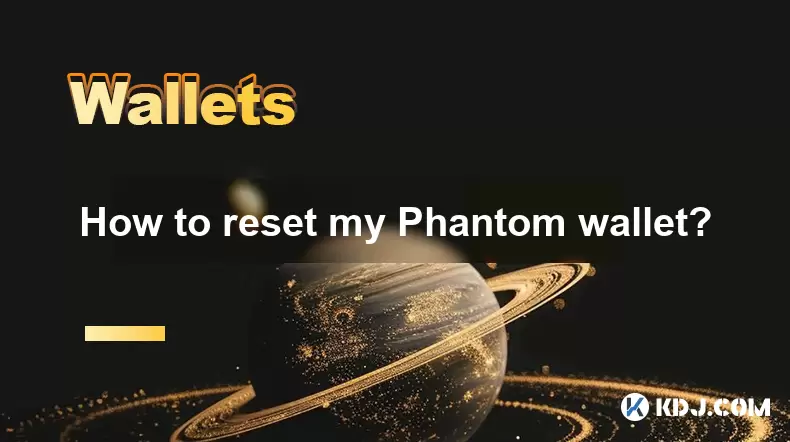
How to reset my Phantom wallet?
Jul 02,2025 at 12:36am
Understanding the Need for Resetting Your Phantom WalletIf you're using a Phantom wallet, you may encounter situations where resetting your wallet becomes necessary. This could be due to forgotten passwords, seed phrase issues, or account corruption. Phantom is a non-custodial wallet primarily used for interacting with the Solana blockchain, and it stor...
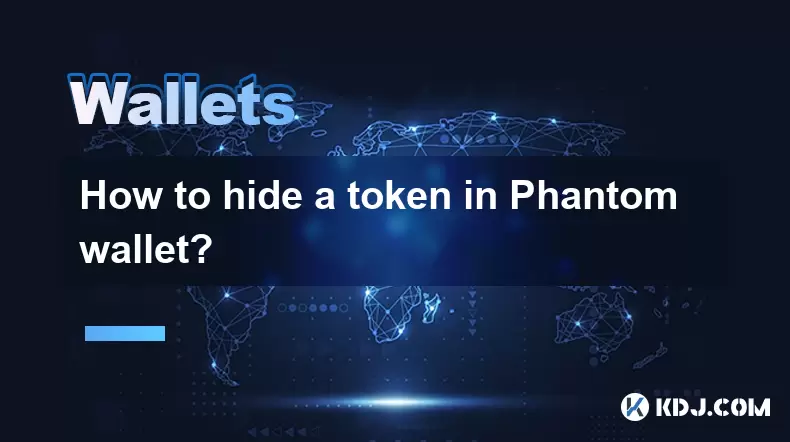
How to hide a token in Phantom wallet?
Jul 01,2025 at 05:49pm
Understanding the Phantom Wallet InterfacePhantom wallet is a popular non-custodial wallet used primarily for interacting with the Solana blockchain. It allows users to store, send, receive, and manage various tokens, including both fungible and non-fungible tokens (NFTs). Before attempting to hide a token, it's essential to understand how the wallet in...
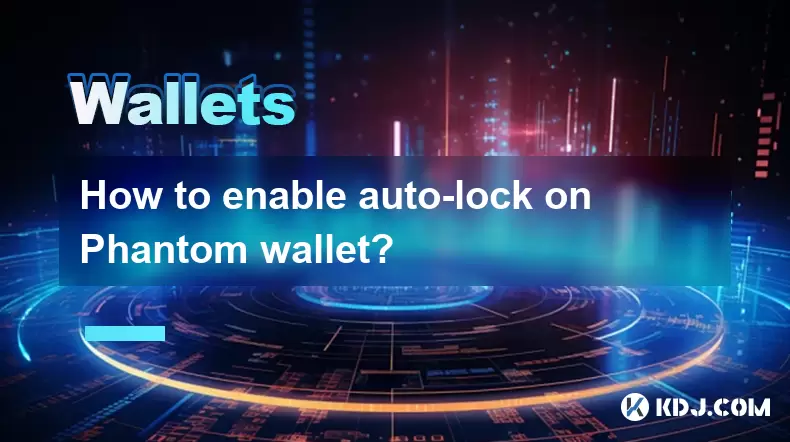
How to enable auto-lock on Phantom wallet?
Jul 01,2025 at 04:01pm
What is Auto-Lock in Phantom Wallet?Phantom wallet is a popular non-custodial cryptocurrency wallet used primarily for interacting with the Solana blockchain. One of its security features includes the ability to set an auto-lock timer, which ensures that the wallet locks itself automatically after a period of inactivity. Auto-lock enhances security by p...
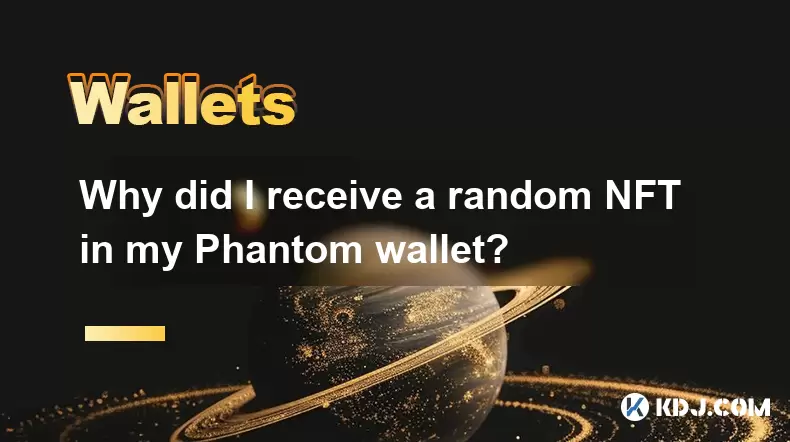
Why did I receive a random NFT in my Phantom wallet?
Jul 01,2025 at 09:00pm
Receiving an Unexpected NFT in Your Phantom WalletIf you've recently opened your Phantom wallet and noticed an unfamiliar NFT appearing in your collection, you're not alone. Many users have reported receiving random or unsolicited non-fungible tokens, often without any prior interaction with the project or sender. This phenomenon has become increasingly...
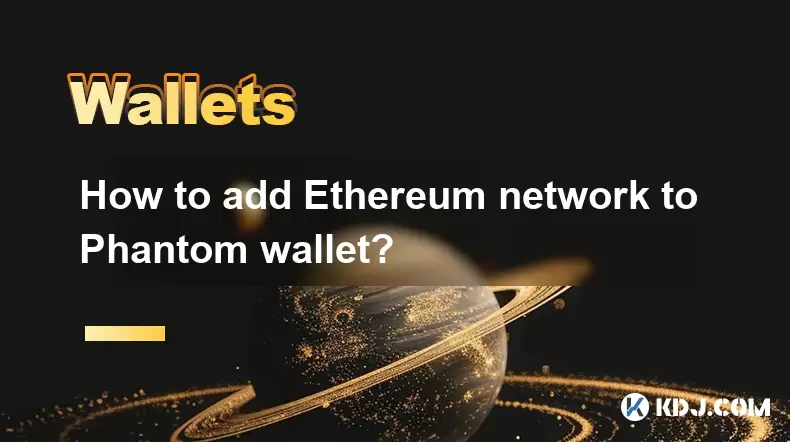
How to add Ethereum network to Phantom wallet?
Jul 02,2025 at 02:00am
Understanding Phantom Wallet and Ethereum CompatibilityPhantom wallet is a non-custodial wallet primarily designed for the Solana blockchain. It provides users with secure storage, sending, and receiving of Solana-based tokens and NFTs. However, many users wonder if they can integrate Ethereum-compatible networks into their Phantom wallet. While Phantom...
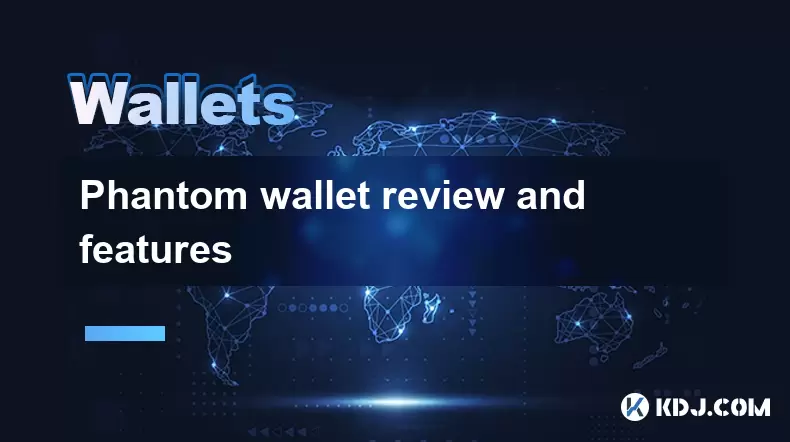
Phantom wallet review and features
Jul 02,2025 at 01:28am
What is Phantom Wallet?Phantom wallet is a non-custodial cryptocurrency wallet specifically designed for the Solana blockchain. It allows users to store, send, receive, and interact with decentralized applications (dApps) on the Solana network seamlessly. Unlike traditional wallets that may require intermediaries, Phantom ensures complete control remain...

How to reset my Phantom wallet?
Jul 02,2025 at 12:36am
Understanding the Need for Resetting Your Phantom WalletIf you're using a Phantom wallet, you may encounter situations where resetting your wallet becomes necessary. This could be due to forgotten passwords, seed phrase issues, or account corruption. Phantom is a non-custodial wallet primarily used for interacting with the Solana blockchain, and it stor...

How to hide a token in Phantom wallet?
Jul 01,2025 at 05:49pm
Understanding the Phantom Wallet InterfacePhantom wallet is a popular non-custodial wallet used primarily for interacting with the Solana blockchain. It allows users to store, send, receive, and manage various tokens, including both fungible and non-fungible tokens (NFTs). Before attempting to hide a token, it's essential to understand how the wallet in...

How to enable auto-lock on Phantom wallet?
Jul 01,2025 at 04:01pm
What is Auto-Lock in Phantom Wallet?Phantom wallet is a popular non-custodial cryptocurrency wallet used primarily for interacting with the Solana blockchain. One of its security features includes the ability to set an auto-lock timer, which ensures that the wallet locks itself automatically after a period of inactivity. Auto-lock enhances security by p...

Why did I receive a random NFT in my Phantom wallet?
Jul 01,2025 at 09:00pm
Receiving an Unexpected NFT in Your Phantom WalletIf you've recently opened your Phantom wallet and noticed an unfamiliar NFT appearing in your collection, you're not alone. Many users have reported receiving random or unsolicited non-fungible tokens, often without any prior interaction with the project or sender. This phenomenon has become increasingly...

How to add Ethereum network to Phantom wallet?
Jul 02,2025 at 02:00am
Understanding Phantom Wallet and Ethereum CompatibilityPhantom wallet is a non-custodial wallet primarily designed for the Solana blockchain. It provides users with secure storage, sending, and receiving of Solana-based tokens and NFTs. However, many users wonder if they can integrate Ethereum-compatible networks into their Phantom wallet. While Phantom...

Phantom wallet review and features
Jul 02,2025 at 01:28am
What is Phantom Wallet?Phantom wallet is a non-custodial cryptocurrency wallet specifically designed for the Solana blockchain. It allows users to store, send, receive, and interact with decentralized applications (dApps) on the Solana network seamlessly. Unlike traditional wallets that may require intermediaries, Phantom ensures complete control remain...
See all articles

























































































